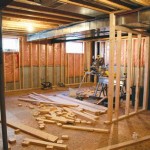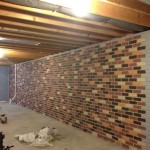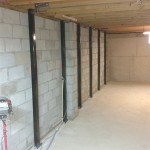Are Cracks in Basement Floors Normal? Understanding Basement Floor Cracks
Basement floors, typically constructed of concrete, are susceptible to cracking. The question of whether these cracks are normal and what they signify is a common concern for homeowners. Understanding the causes, types, and potential consequences of basement floor cracks is essential for proper home maintenance and preventing potential structural issues.
Concrete, by its nature, is prone to cracking. It is a composite material that undergoes a chemical process called hydration as it cures. This process involves the reaction of cement with water, leading to the formation of a hardened matrix. However, this hydration process also causes the concrete to shrink. This shrinkage, combined with other factors, can lead to the development of cracks. While some cracks are superficial and pose no immediate threat, others can indicate underlying structural problems.
Understanding the Types of Basement Floor Cracks
Basement floor cracks can manifest in various forms, each telling a different story about the forces at play. Recognizing these different types is the first step toward assessing the severity of the situation and determining the appropriate course of action.
Hairline Cracks: These are very thin cracks, typically less than 1/16th of an inch wide, often appearing as fine lines on the concrete surface. They are frequently the result of shrinkage during the curing process or minor settling of the house. In many cases, hairline cracks are considered normal and do not pose a significant structural threat. However, they can still allow moisture to penetrate, potentially leading to issues like efflorescence or, over time, larger cracks.
Settlement Cracks: These cracks occur due to the settling of the foundation. The settling may be caused by changes in soil moisture content, poor soil compaction during construction, or inadequate drainage around the foundation. Settlement cracks can be wider than hairline cracks and may be accompanied by unevenness in the floor. The direction and pattern of settlement cracks can provide clues about the source of foundation movement. If the foundation settling is on going, it will result in larger and wider cracks over time
Shrinkage Cracks: As previously mentioned, concrete shrinks as it cures. If the concrete is restrained from shrinking freely, tensile stresses develop, leading to the formation of shrinkage cracks. These cracks tend to be random in direction and relatively shallow. Proper control joints, which are pre-planned grooves in the concrete, are designed to encourage cracking in a controlled manner, preventing random cracking across the entire floor.
Structural Cracks: These are the most concerning type of basement floor crack. Structural cracks are typically wider than 1/4 inch and may be accompanied by vertical displacement (one side of the crack is higher than the other) or horizontal movement. They can indicate significant foundation problems, such as soil instability, hydrostatic pressure against the foundation walls, or structural overloading. Structural cracks often require professional assessment and repair to prevent further damage to the foundation and the overall integrity of the house.
Heaving Cracks: Unlike settlement cracks, heaving cracks result from the upward movement of the ground underneath the basement floor. This upward movement can be caused by freezing and thawing of the soil, expansive clay soils that swell when wet, or hydrostatic pressure pushing upwards. Heaving cracks can be identified by their raised edges and the presence of upward displacement. These types of cracks often require extensive repairs, addressing the underlying cause of the heaving.
Active vs. Inactive Cracks: It is important to determine whether a crack is active or inactive. An active crack is one that is widening or changing over time, indicating ongoing movement or stress. An inactive crack, on the other hand, is stable and has not changed significantly. Monitoring cracks over time, using markers or measuring techniques, can help determine whether they are active or inactive. Active cracks always warrant further investigation.
Factors Contributing to Basement Floor Cracks
Several factors can contribute to the formation and propagation of basement floor cracks. Understanding these factors can help homeowners take preventative measures to minimize the risk of cracking or address existing issues effectively.
Soil Conditions: The type of soil surrounding the foundation plays a significant role in its stability. Expansive clay soils, as mentioned earlier, can cause significant problems due to their volume changes with moisture content. Poorly compacted soils can also lead to settlement issues. Soil testing and proper soil preparation during construction are crucial for preventing foundation problems.
Drainage: Improper drainage around the foundation can lead to excessive moisture buildup in the soil. This moisture can cause hydrostatic pressure against the foundation walls and can also contribute to soil expansion and contraction. Properly functioning gutters, downspouts, and grading are essential for directing water away from the foundation.
Hydrostatic Pressure: Hydrostatic pressure is the pressure exerted by water against the foundation walls and floor. When the soil around the foundation becomes saturated, the water pressure can increase significantly. This pressure can cause cracks in the foundation walls and floor, and in severe cases, can even lead to foundation failure. Sump pumps and drainage systems are often used to alleviate hydrostatic pressure.
Construction Practices: The quality of construction plays a crucial role in the long-term performance of the basement floor. Proper concrete mix design, reinforcement with steel or fiber, and proper curing techniques are essential for minimizing shrinkage and preventing early cracking. Inadequate or improper construction practices can increase the likelihood of cracking.
Tree Roots: Tree roots can exert significant pressure on the foundation as they grow. Roots can penetrate cracks in the foundation and expand, exacerbating existing cracks and potentially causing new ones. Planting trees too close to the foundation should be avoided.
Temperature Fluctuations: Temperature changes can cause concrete to expand and contract. These thermal stresses can contribute to the formation of cracks, especially in areas with extreme temperature variations.
Assessing and Addressing Basement Floor Cracks
When basement floor cracks are observed, it's important to assess them carefully to determine their severity and potential impact. This assessment involves observing the characteristics of the cracks and monitoring them over time.
Visual Inspection: A thorough visual inspection involves noting the location, size, direction, and pattern of the cracks. Look for signs of vertical displacement or horizontal movement. Take photographs to document the cracks and their characteristics. Note any moisture or efflorescence (a white, powdery deposit) present near the cracks.
Monitoring: Monitoring cracks over time is crucial for determining whether they are active or inactive. This can be done by marking the ends of the cracks with a pencil and observing whether the marks move apart. Alternatively, a crack monitor, a device that measures the width of the crack, can be installed. Regular monitoring will help to determine if the crack is widening and if the foundation is still moving.
Professional Evaluation: For cracks that are wider than 1/4 inch, accompanied by movement or displacement, or are suspected to be structural, a professional evaluation is recommended. A structural engineer or foundation specialist can assess the situation and recommend appropriate repair options. These professionals have the expertise and equipment to diagnose the underlying cause of the cracking and develop a tailored solution.
Repair Options: The appropriate repair option will depend on the type and severity of the crack. Hairline cracks can often be sealed with a concrete crack sealant to prevent moisture penetration. Wider cracks may require more extensive repairs, such as epoxy injection or polyurethane injection. Structural cracks may necessitate foundation underpinning or other structural repairs to stabilize the foundation and prevent further movement.
Preventative Measures: Preventing basement floor cracks is always preferable to dealing with them after they occur. Proper drainage, soil preparation, and quality construction practices are essential for minimizing the risk of cracking. Routine maintenance, such as cleaning gutters and downspouts, can also help to prevent water buildup around the foundation.
In conclusion, while some hairline cracks in basement floors are considered normal due to concrete shrinkage, other cracks can indicate underlying structural problems. Understanding the different types of cracks, the factors that contribute to their formation, and the methods for assessing and addressing them is essential for maintaining the structural integrity of a home. Regular monitoring and prompt attention to any signs of significant cracking can help prevent costly repairs and ensure the long-term stability of the foundation.

Causes Of Basement Floor Cracks And What To Do About Them News Events For Systems Inc

Cracks In Basement Floor Signs Of Foundation Problems

Is That Crack In The Basement Floor A Structural Problem Safe Harbor Inspections

Are Cracks In My Basement Floor Normal The Real Seal Llc

10 Types Of Basement Foundation Cracks You Should Know

Why Your Basement Floor Is Cracked Terrafirma Foundation Systems

Repair Leaky Basement Floor Cracks Oklahoma City Fort Smith Vesta

From The Forum Help My Basement Slab Is Cracking Popville

Why Are Cracks In My Basement Floor Mt Drains Plumbing

Large Concrete Cracks In Basement Eng Tips
Related Posts







